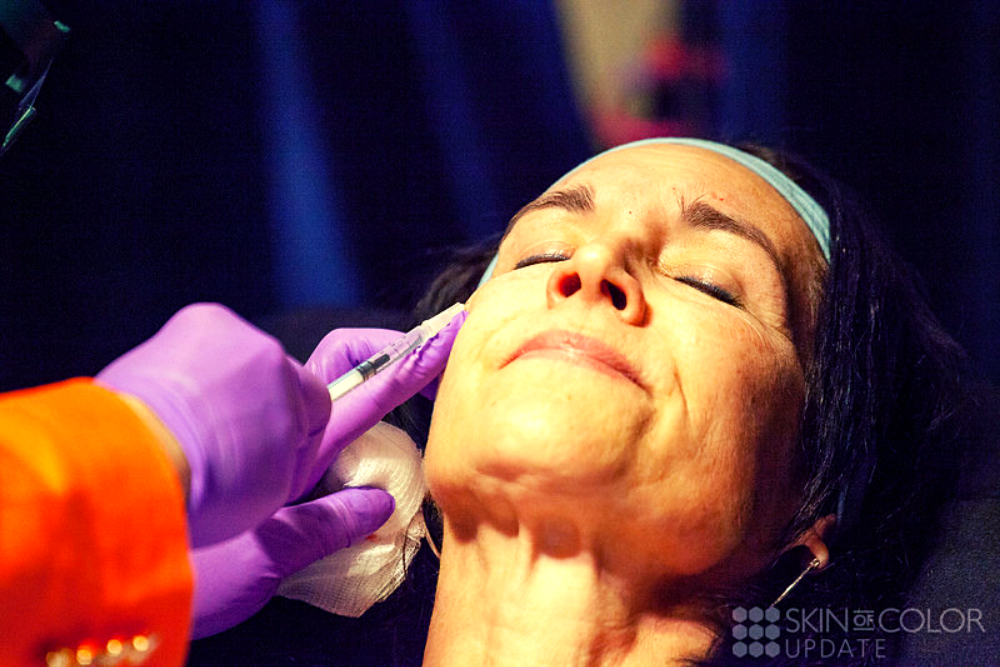A Natural Approach to Restoring Youthfulness and Preventing Aging
When rejuvenating the face with soft tissue fillers, dermatologists must consider its structural framework, and patient specific goals/needs holistically to achieve natural results.1-3 Dr. Neil Sadick has developed a distinct methodology called volumetric structural rejuvenation (VSRTM), that can be applied to both genders and all ages.4-5 His ultimate goal is to deliver true to life and form results amalgamated in his patient’s look. The benefits of VSR are:
a) minimal patient discomfort
b) no incisions
c) no downtime
Dr. Neil Sadick has treated hundreds of patients with VSR and results are durable, require minimal touchups, and reflect on an overall glow/radiance due to the biological properties of the fillers.
Steps to Volumetric Structural Rejuvenation
The first step to volumetric structural rejuvenation is to place the fillers supra-periosteally to lay the foundation of the upper, mid, and lower face. The goal is to replete volume loss due to deflation of the temporal, preauricular lateral cheek, mid-cheek, and mandibular fat pads and to address musculoskeletal atrophy.4,6,7 The three key access points of injections are the temporal fossa, the midface, and the jawline.
Following these injections, three supportive ligament sites are marked and filler is placed in the deep dermis to provide fibrous fixation points and restrain the facial skin against gravitational changes: the pyriform (superior part nasolabial fold), the modiolus (lateral to the inferior part of nasolabial fold), and McGregor’s patch (posterior to the zygomaticus minor muscle).

The final step of VSR involves dermal/subcutaneous injections to customize facial contouring and focal points depending on the physician’s assessment of patient’s anatomy and individualized goals. These include focal injections in sites of superficial lipoatrophy, injections to contour the face and soften any sharp angles (particularly the jawline area), and injections towards the hairline for lateral vectoring. This last step of customization requires an intimate communication, prior to treatment, between the patient and physician. As a provider, Dr. Neil Sadick makes sure to describe all available options, for example tapered vs rounded cheek, for optimal results.8Finally, as different patients, regardless of their age, present varying levels of lipoatrophy, the VSR technique can be readily modified to adapt to the needs of the patient for panfacial structural rejuvenation. Beginning the VSR program early is central to age prophylaxis and ensuring skin health.
References
- Fitzgerald, R. and A.G. Rubin, Filler placement and the fat compartments. Dermatol Clin, 2014. 32(1):37-50.
- Greco, T.M., M.B. Antunes, and S.A. Yellin, Injectable fillers for volume replacement in the aging face. Facial Plast Surg, 2012. 28(1):8-20.
- Solish, N., The aging face: global approach with fillers and neuromodulators. Semin Cutan Med Surg, 2016. 35(6 Suppl):S120-1.
- Sadick, N.S., et al., The Facial Adipose System: Its Role in Facial Aging and Approaches to Volume Restoration. Dermatol Surg, 2015. 41 Suppl 1:S333-9.
- Sadick, N.S., S. Manhas-Bhutani, and N. Krueger, A novel approach to structural facial volume replacement. Aesthetic Plast Surg, 2013. 37(2):266-76.
- Kruglikov, I., et al., The Facial Adipose Tissue: A Revision. Facial Plast Surg, 2016. 32(6):671-682.
- Sandoval, S.E., et al., Facial fat compartments: a guide to filler placement. Semin Plast Surg, 2009. 23(4):283-7.
- Shamban, A., Customized Approach to Facial Enhancement. Facial Plast Surg Clin North Am, 2015. 23(4):471-7.
Source:
Sadick, Neil. “Facial Volumetric Structural Rejuvenation: A Natural Approach to Restoring Youthfulness and Preventing Aging.” J Drugs Dermatol 17.9 (2018): 1015-1015.
Content and images used with permission from the Journal of Drugs in Dermatology.
Adapted from original article for length and style.
Did you enjoy this article? Find more on Derm Topics here.

